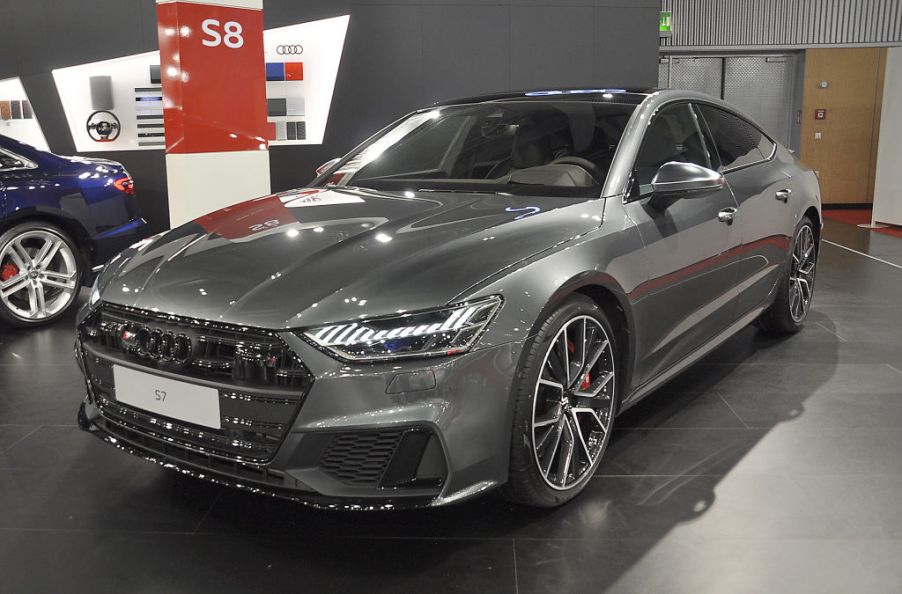
The 2020 Audi S7 Adds Efficiency to Its Appeal
The Audi S7 skipped the 2019 model year and has now returned with a number of updates for 2020. This model year also introduces a new generation for the Audi S7. Are the changes for the better? Here’s a look at what Car and Driver thought of the new 2020 Audi S7.
Car and Driver’s 2020 Audi S7 review
The five-passenger, four-door hatchback Audi S7 shares a platform with the Audi A6 sedan and has a lot of similarities to the A7 and RS7 as well. The 2020 S7 has a new engine for this new generation. The twin-turbocharged and supercharged 2.9-liter V6 engine produces 444 hp and 443 lb-ft of torque. The engine is paired with an eight-speed automatic transmission. Car and Driver said it isn’t as sharp or quick as either the previous model or the competitors.
An electric compressor works to generate boost and eliminate the lag that can come with turbocharging when the turbos are warming up. There is also a 48-volt motor-generator to help improve the start-stop function.
Car and Driver loved the ride, declaring that “the gleeful driving dynamics remain.” The standard air spring and 20-inch wheels actually give a smoother ride than the optional coil springs and 21-inch wheels. The torque-vectoring rear differential, which is included in the S Sport package, makes the car feel like it has rear-wheel drive, although it is four-wheel drive.
Car and Driver called out a number of positives for the S7, saying the car was “rewarding to drive at the limit, [and had an] impeccably rendered interior, sleek exterior, [and] strong brakes.”
What’s new for 2020
As the first in a new generation, the 2020 Audi S7 introduces several new features. It has a smaller engine, which Car and Driver wasn’t happy about. The 2018 Audi S7 had a V8, while the 2020 model year is powered by a V6. The new engine has a lower horsepower output by 6 hp, but the torque has increased by 37 lb-ft. Along with the engine change, the previous model’s seven-speed transmission has been switched for a new eight-speed transmission.
The electric compressor supporting the turbos is a new feature in the U.S., and the Audi S6 and S7 are the first two to include this technology. The S7 now weighs a bit more than in the past, increasing the weight by 132 pounds to 4,640 pounds. In part, that total is increased by the new electric components. The heavier weight plays a part in making the 2020 S7 a bit slower than in the past.
The interior has been fully redesigned and now sports a more modern look. That includes a 12.3-inch digital gauge cluster plus two haptic-feedback screens in the center console – a 10.1-inch screen on top and an 8.6-inch screen below.
Better fuel efficiency

While Car and Driver was a bit sad about the smaller engine, the new engine does improve the fuel efficiency of the Audi S7. According to the EPA, the S7 is rated for 18 mpg in the city and 28 mpg on the highway, for a combined 22 mpg.
That’s a combined four mpg better than the 2018 model year. That year was rated for 16 mpg city and 24 mpg highway, with a combined 18 mpg. In its tests of the 2020 model, Car and Driver got about 16 mpg combined rather than the expected 22 mpg, though. With just highway driving, testers did achieve 28 mpg. Also, while its efficiency is improved, it’s still not as good as the Mercedes-AMG CLS53, which does slightly better in the city.
With a more modern look and a new engine, the 2020 Audi S7 offers some tradeoffs when compared to the 2018 S7. The car is heavier and the engine is smaller, but it’s still great to drive and offers improved fuel efficiency.


